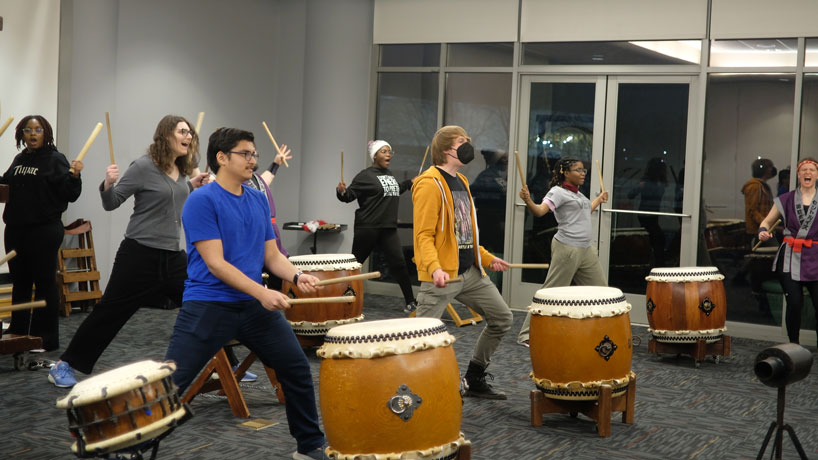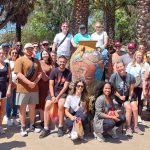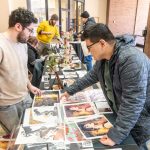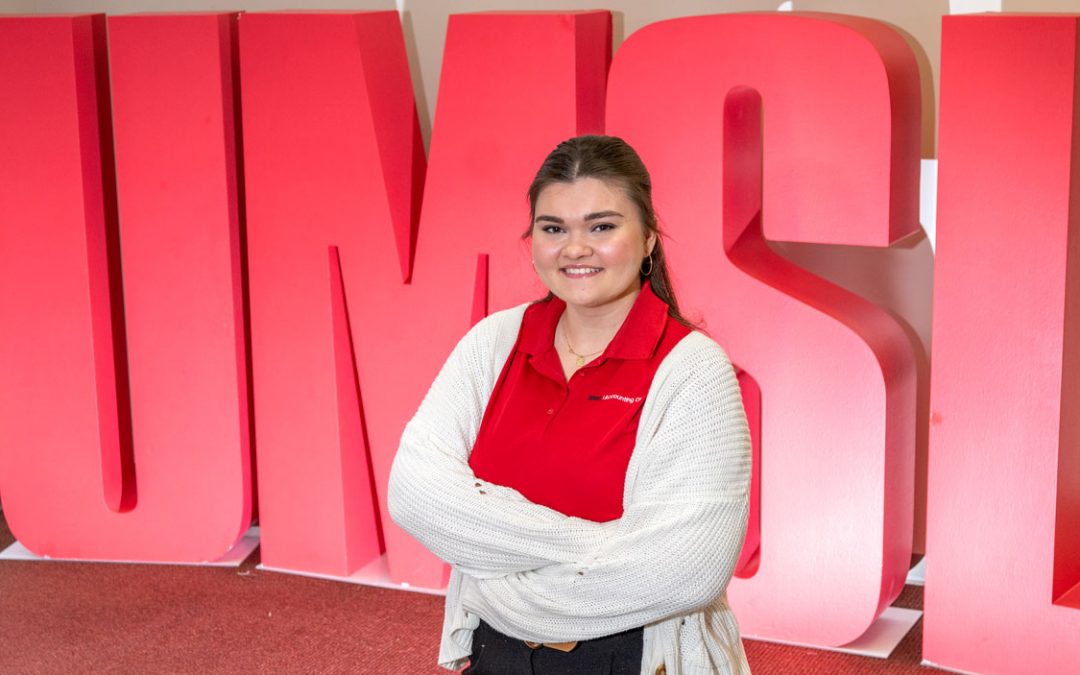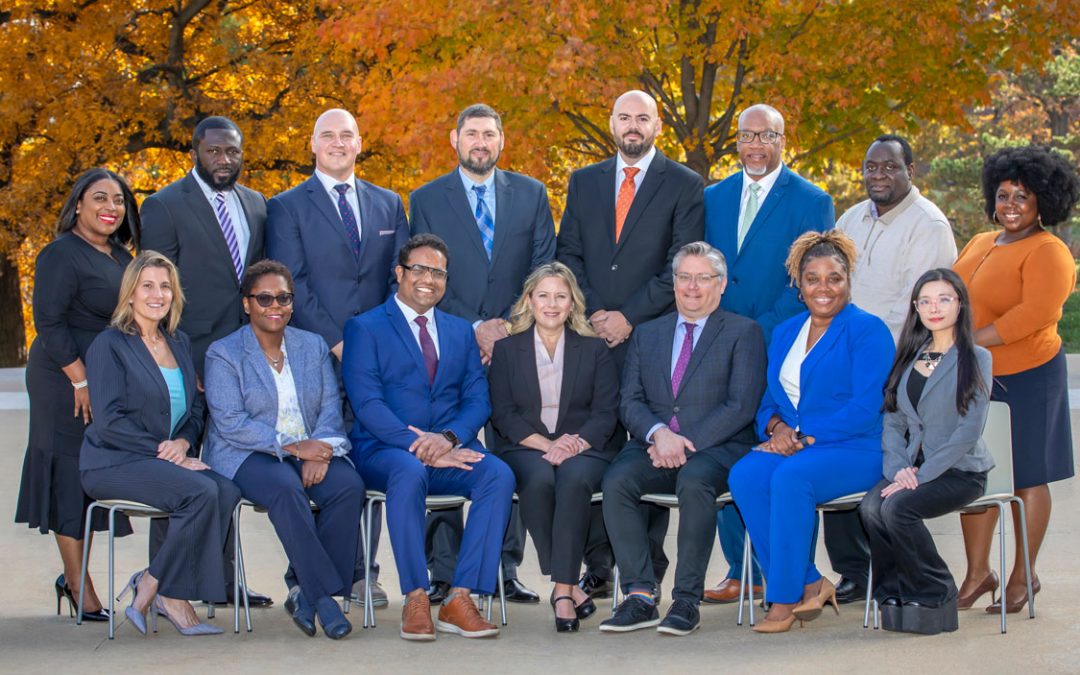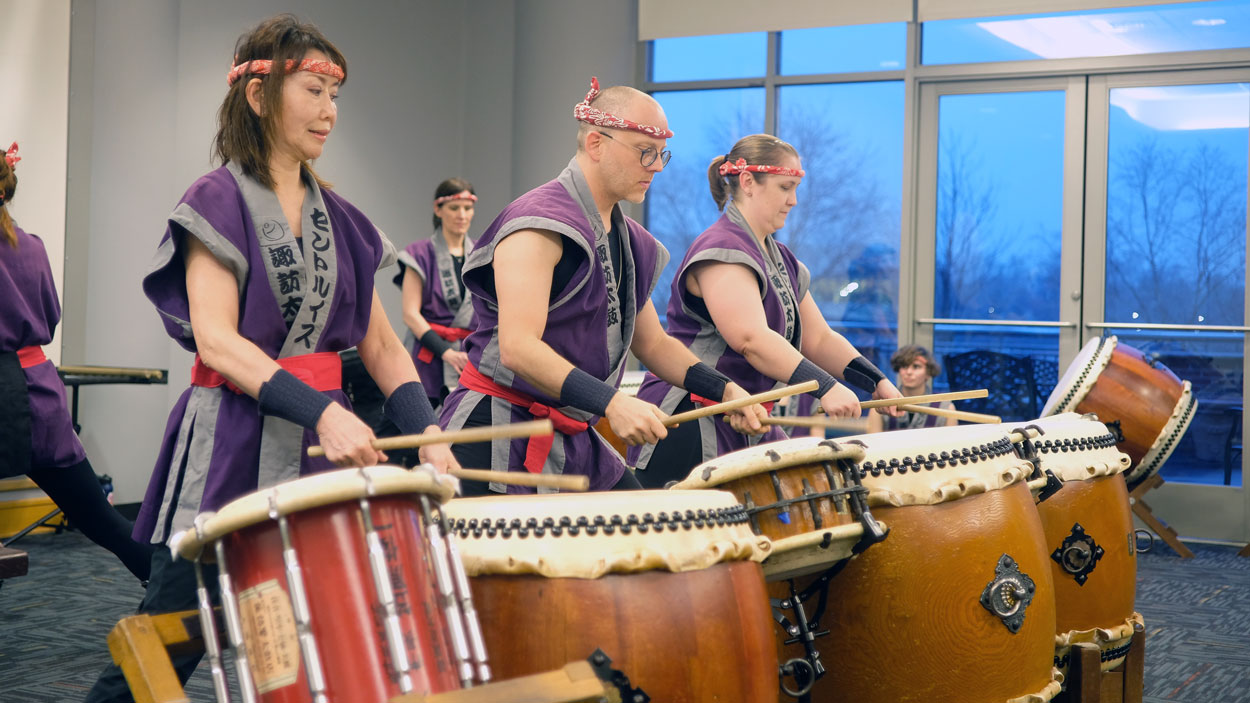
Andrew Thacheimer (center), artistic director of St. Louis Osuwa Taiko, and two members of the ensemble concentrate during the finale of Thursday evening’s performance. The event was part of National Foreign Language Week hosted by the Department of Language and Cultural Studies. (Photos by Burk Krohe)
Century Room C in the Millennium Student Center reverberated with rhythmic drumming that could be felt through the floor and in the chests of the audience Thursday evening as St. Louis Osuwa Taiko performed.
A crowd of about 30 University of Missouri–St. Louis faculty, staff and students took in the enveloping experience as the local ensemble drummed perfectly in unison.
A portion of the troop wielded “bachi,” thick drumsticks closer to the size of rolling pins, as they struck half a dozen drums the size of barrels spread across the space, while others accompanied them on smaller drums, percussive instruments and a high-pitched wooden flute. Their playing was periodically interspersed with choreographed arm movements, chants and “kiai,” short bursts of vocal exuberance.
The energetic performance was part of a series of events for National Foreign Language Week hosted by the Department of Language and Cultural Studies. Taiko is a traditional form of Japanese musical performance art that has been practiced in the country for more than 1,400 years. The event included renditions of five original and traditional taiko pieces as well as a hands-on workshop led by Andrew Thacheimer, the artistic director of St. Louis Osuwa Taiko.
Amy Michael, associate teaching professor of Japanese, helped organize the event, which was supported by a community engagement grant funded by the College of Arts and Sciences.
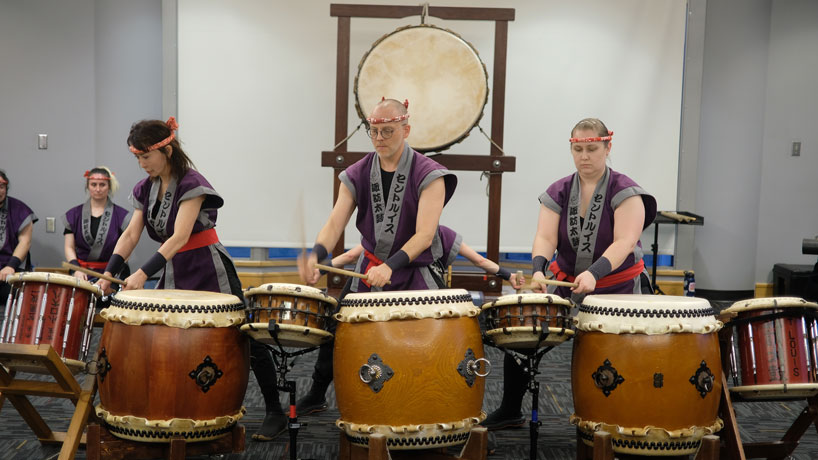
Andrew Thacheimer (center) and two St. Louis Osuwa Taiko members perform an original composition to close the performance. During the dramatic final song, they played multiple drums and, at times, switched places with each other.
“We always love to welcome Osuwa Taiko to campus,” she said. “One of the things that was really exciting was how much fun they were having and the energy that they had among each other, and then that spread to the audience.”
Autumn Fox was one of those audience members. Fox is taking Japanese classes and plans to make it her minor.
“I’m taking Japanese, and I’ve always had a love for music,” Fox said. “So I wanted to come and hear the music and get a chance to play around with it.”
Thacheimer said the ensemble decided to play a variety of selections for the crowd.
They kicked things off with a song by Osuwa Daiko, one of the oldest Taiko groups in Japan, that tells the mythological origins of the art form. Next came a piece typically played at matsuri, traditional Japanese festivals. During its performance, members of the troop moved throughout the crowd dancing, including one guised as a “shishi,” a mythical dragon dog. The shishi stopped periodically to bestow good luck to audience members with a playful bite.
The third song was an original work, while the fourth was a mournful duet originally composed by Seiichi Tanaka, the father of North American taiko, featuring a flute and hand-held flat drum. The ensemble closed the show with a dramatic original song with three drummers on center stage playing multiple drums and, at times, switching places with each other.
“It was incredible,” Fox said of the performance. “I’m glad I was up close for it because the sound from the drums going into your bones is not something you get through a microphone. It was really cool to be that close to it.”
Thacheimer said St. Louis Osuwa Taiko is always pleased to play at UMSL, noting that the university previously provided rehearsal space for the group for about six years.
The evening wrapped up with a workshop, in which 12 students in attendance took the stage to learn the fundamentals of taiko. Thacheimer provided instruction in proper grip of the bachi, “kata,” stances to strike the drums, and arm motion. He led several exercises in basic drumming techniques and rhythms, gradually adding more performance elements.
“They did great,” Thacheimer said. “I was running out of material. They were picking it up too fast.”
The students found out firsthand just how much athleticism and talent goes into taiko.
“It made the performance even more impressive,” Fox said. “I’m sitting there like, ‘They did this for that long?’ My legs were shaking. It’s a lot and the fact that they were able to keep it going for half an hour was incredible.”

